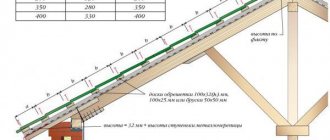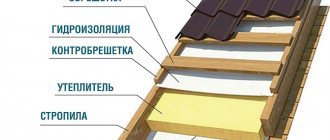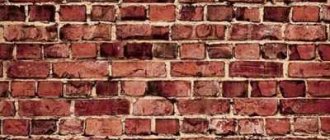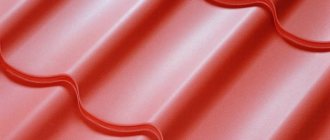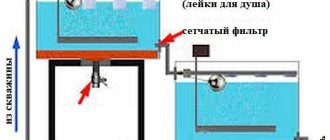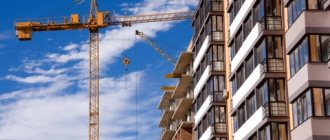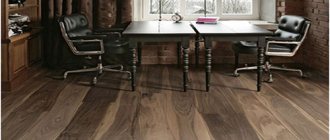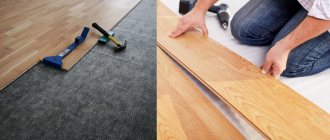Every laminate and parquet flooring store sells underlay, a necessary accompanying material. Manufacturers strive for additional profit and come up with more and more new substrates, often completely unreasonably. Managers in stores rarely have a serious theoretical basis and often give harmful information to customers. In this article we will try to describe all the popular types of substrates and answer the question - which substrate is better for parquet boards and laminate. The article should be considered a review from “I” employees, based on many years of experience working with parquet.
Substrate thickness and other theoretical information
Perhaps the most common misconception among buyers is the belief that the thicker the substrate, the better. Supposedly this will make walking softer and the load on the parquet board or laminate will be less. This is wrong. According to the standard, the maximum height difference when laying laminate and parquet boards is 2 mm per 2 m². This includes both the difference in the base itself and the shrinkage of the substrate. Soft materials such as foam or cork will compress when pressed. The larger the layer of such a substrate, the greater the height difference. The difference in height creates play in the locks of the laminate or parquet board, which causes increased wear of the lock joint and the appearance of squeaking. What’s most offensive is that the parquet boards do not begin to creak and the locks break off immediately, but after several months without the possibility of timely detection of a laying defect.
Based on the above, the standard substrate thickness is 2 mm. This thickness, with a well-leveled base, even in the event of complete damage or the absence of a fragment of the substrate (for example, due to poor-quality installation or separated strips of the substrate), allows the standard permissible difference to be met. Please note that most parquet board manufacturers specify in the installation requirements the need to use a 2 mm thick cork backing. With a non-standard substrate, even in a warranty case, the manufacturer may refuse, but in practice the manufacturer only cares about the thickness.
Stores often sell cork 4, 6 or 8 mm thick, but such materials are not intended by manufacturers for laying laminate and parquet boards.
Another myth is that the base can be leveled with a substrate. Underlays for laminate and parquet boards perfectly follow the shape of all floor irregularities. To level the floor in cases where it is impossible to use hardening mixtures (usually due to saving work time), it is necessary to use solid materials - either gypsum or other sheets, or moisture-resistant traditional plywood.
Almost all types of substrates (except Tuplex and those based on bitumen mastic) have a porous structure that is not protected from moisture. When laying on plywood or dry leveling sheets, additional moisture insulation is not required. If parquet boards and laminate are laid on a screed, dew appears on the surface of the screed due to the temperature difference, so it is highly recommended to lay a polyethylene film 200 microns thick or slightly thicker with a wide overlap under the moisture-proof substrate.
They also often began to sell the substrate not in rolls, but in sheets. For example, a traffic jam. Sheet materials have no advantages or convenience when laying them, except for greater profits for the manufacturer.
How to lay underlayment under parquet
To lay the underlayment under the parquet, you need to perform the following steps:
- Clean the concrete base from debris and dust.
- Install waterproofing. The polyethylene film must be laid overlapping. The joints are taped. The edges of the film are placed on the walls to a height of 100 mm.
- A backing made of elastic materials is laid out with the edges on the walls. Cork and coniferous sheets are laid end-to-end, leaving a gap of 10 mm from the vertical surfaces.
- The joints of the canvases are taped with tape.
- All products, with the exception of coniferous ones, are laid out as the parquet boards are laid. You cannot walk on the stacked sheets.
Foamed propylene backing
The cheapest underlay, which is often purchased for laminate flooring. Nothing particularly bad can be said at first glance - it meets the installation requirements and does not react to moisture. One nuance - the decomposition of foamed propylene occurs on average after 7-10 years, after which the substrate turns into powder, losing the necessary properties of hydro- and thermal insulation. In addition, rolls of expanded propylene may sit in a warehouse for a couple of years before being sold to the consumer. All foamed polymers are fire hazardous, much more dangerous than wood, especially if you take into account the high toxicity, as a result of which the use of such a substrate is prohibited in many buildings.
Heat treatment
One of the ways to improve the characteristics of wood for parquet production is heat treatment or artificial aging. This process has nothing to do with staining or smoking wood. When smoking, the surface is treated with smoke, and when stained, it is impregnated with a special composition. During heat treatment, the wood is kept for some time in a chamber with a temperature of about + 200 degrees. As a result of this impact, the tree acquires the following advantages:
- Increases resistance to rotting and fungal attack.
- Hardness, density, and wear resistance increase. Heat-treated wood tolerates high humidity, changes in room temperature and mechanical stress.
- Light breeds darken and take on the appearance of expensive exotic ones.
We advise you to study - How to choose a safe for an apartment
Whether the wood has been subjected to heat treatment must be noted in the product description. Sometimes you can find such names as thermal ash, thermal oak, etc. They indicate that this type of parquet is made using heat treatment technology. Over time, heat-treated natural boards lighten a little.
Thermal parquet
Cork backing
Traditional underlay for parquet boards. Cork is the best natural sound and heat insulator and a completely natural product, so it is truly an excellent material. The only serious disadvantage of cork is that it swells with water. Cork underlay is available in different thicknesses; under parquet boards and laminate you should use only 2 mm thick cork underlay. If the substrate is thinner, it crumbles, significantly reducing the service life of floating floors. If the plug is thicker, there is an excess load on the locking connection. The lack of moisture protection should not significantly affect the choice, because... The inner layers of a parquet board, and even more so a laminate, are much more afraid of moisture. If the cork substrate is laid on a concrete screed or self-leveling floor, be sure to lay a 200 micron thick polyethylene film underneath with a wide overlap and go over the joints with moisture-proof tape.
Sometimes you can find something exotic in stores - a cork backing with a finished polyethylene layer. Good, but overpriced, it’s easier to buy two layers separately.
Floors
105 votes
+
Vote for!
—
Vote against!
Parquet boards can be laid on a concrete screed, wooden floor or plywood base. Regardless of the type of rough coating, most craftsmen claim that waterproofing and underlayment are prerequisites for proper installation. Why is it so important to make a layer between the base and the coating itself? The article will discuss which underlay for parquet boards is better.
What are the benefits of using an underlay for parquet boards?
We should start with the fact that any material laid under a parquet board has a couple of important missions: to extend the life of the floor covering and make its use as comfortable as possible. But these goals are achieved due to the following qualities of the substrate:
- Correction of minor surface imperfections . Many may doubt the “need” of this quality, because before laying the board, the floor surface is leveled in one way or another. This is true, but even a very experienced builder finds it difficult to achieve perfect evenness, for example, of a cement screed. So it’s definitely not worth saving on the substrate for this one item.
- Additional thermal insulation . In addition to the fact that the warmth of the base under our feet is a very common criterion by which comfort and coziness in the house are assessed, the substrate normalizes the microclimate between the base and the final finishing material.
- Noise insulation . In addition to low thermal conductivity, the substrates dampen the noise of the apartment owners' footsteps and work in the opposite direction. That is, they do not allow noise from neighbors below to pass through. Convenience for the inhabitants of two apartments is ensured by one material. And in addition to steps, the substrate will dampen vibrations and the sounds of household appliances.
- Waterproofing. Its necessity has already been mentioned above. In order for a parquet board to serve for a long time and not deform, it needs protection from moisture regardless of the microclimate in the house or apartment. The substrates, to one degree or another, serve as a barrier between water and the parquet board.
All of the listed characteristics are, to a greater or lesser extent, inherent in the substrates that will be discussed below. In addition to such characteristics, it is important for the consumer to have such qualities as:
- durability of the material;
- its environmental friendliness and safety;
- strength (so that the weight of the furniture and large crowds of people do not affect the substrate);
- and, of course, the price.
The choice of materials is large, and they all have different properties. It makes sense to compare the pros and cons of each to find the ideal.
Tuplex backing
It is an excellent example of a material in which the developers tried to cover the entire range of problems solved by the substrate.
- It consists of three layers. The first one is vapor permeable. Thanks to it, moisture and condensation will not accumulate and harm the parquet board. They will be trapped in the second layer of polystyrene foam and will be released from it through the open edges. This feature will require the purchase of skirting boards with a special ventilated design: they not only tightly press the packet board to the floor, but also do not retain moisture removed by the substrate.
- Since expanded polystyrene is a good insulation material, “Tuplex” is recommended for use in country houses, private buildings and cottages. If the floors in the apartment are not warm, then the use of such a substrate can improve the situation.
- The sound insulation of this material is also at a high level. Tuplex is an eco-friendly polymer product. Its density allows not only to level the base well, but also to efficiently distribute the load. A parquet board with such a backing is under reliable protection.
- The price of this underlay for parquet boards is 90-120 rubles/m2.
Parkolag
- One of the components of this substrate for parquet boards is bitumen mastic. Cork granules are evenly distributed over the bitumen layer. They provide reliability, durability and sufficient ventilation.
- Such a substrate was an ideal material, if not for a significant drawback: proximity to heating systems or high room temperature serve as catalysts for a reaction in which bitumen mastic begins to release harmful formaldehyde. So extremely high levels of heat and sound insulation, good protection from moisture pale in comparison with the possible damage to health.
- European quality standards do not recommend the use of such material.
Foamed propylene
- Those who are looking for the most affordable option should opt for a material such as foamed propylene. You can buy such a backing for parquet boards for 20 rubles/m2.
- Properly selected in thickness, it will cope with the main tasks of the material laid under the parquet board. It can (albeit to a lesser extent than the examples described above) serve as a noise and vapor barrier, and provide a layer for additional insulation of floors in the room. All this becomes possible thanks to the porous structure, which, unfortunately, lacks strength and durability.
- The period of “professional suitability” for a foamed propylene substrate is limited to seven to ten years. At the same time, none of the sellers honestly admits how long the roll has lain in the warehouse. The material will not just “shrink”, as some buyers believe (this would be the least of the evils).
- The substrate will disintegrate into a powder, which will in no way extend the life of the parquet board. Another significant disadvantage is the exceptional flammability of the material. Such a lining will quickly catch fire and release extremely toxic fumes.
- The underlay for parquet and laminate penopremium floores enjoys positive reviews on the building materials market.
Backing with foil layer
- This material is a kind of modification of the above-described foamed propylene substrate. It is on this that an additional layer of foil is applied as a base. This is done in order to improve thermal insulation and waterproofing properties. This material will also cope well with noise absorption.
- Its service life still remains short, so it is more advisable to use it as a substrate for inexpensive and not very durable floor coverings, for example, laminate. For expensive and high-quality parquet boards, it is still preferable to choose another option.
Cork underlay for parquet boards
- A cork backing for a parquet board is the best option for a child's room. Thermal insulation and noise absorption are absolutely necessary qualities in this room. This is a strong, durable and elastic material.
- Its environmental friendliness guarantees that no harmful fumes or formaldehydes during its operation will harm human health.
- The thickness of the cork underlay for parquet boards ranges from 1.5 to 8 sometimes 10 mm. In the case of laying parquet boards, you should not chase high rates. The best option would be to purchase a cork backing 2 mm thick. A material with smaller dimensions will not withstand the load and will begin to crumble, and a denser version will “undermine” the locking type of connection of the parquet board from the inside. Neither one nor the other will increase the service life of the coating, but rather will only harm it.
- Among the significant disadvantages, besides the cost, there is only one design disadvantage: the cork substrate is very susceptible to moisture. If the lining gets wet, it will lose all its “abilities” and will require complete replacement. Laying cork underlayment is recommended only in rooms with low air humidity, while providing the most reliable layer of waterproofing. If you can’t find a substrate on sale that already comes with such protection, then it won’t be too difficult to cope with the task yourself.
- But as a reward, the consumer receives an excellent material: it does not compress over time, perfectly eliminates unevenness and minor defects on the floor, is environmentally friendly, and does not lend itself to rotting processes.
General principles for choosing a substrate for parquet boards
Before laying the substrate, you need to consider the parameters that will be decisive in choosing the material:
- conditions in the room where the parquet board will be installed. Assess the possible loads on the floor in the room, humidity and temperature;
- environmental Safety. The bedroom and nursery require that the substrate meets all safety standards;
- The quality characteristics of the substrate are no less important. The lack of a waterproofing layer can be compensated for by doing it yourself, but hardly anyone would want to open up the floors after 5–7 years to change the underlay;
- the ratio of the quality of the floor covering and the lining under it. If you purchased an inexpensive laminated parquet board, designed to be replaced after 7-10 years of operation, then there is no need to spend money on an expensive substrate. A completely out-of-budget Tuplex or cork material will not justify the money spent on them. This is the case when foamed propylene (on its own or with a foil layer) will be the optimal solution;
- It is advisable to choose a high-quality soundproofing underlay for parquet. Cork materials have the best performance.
Additional vapor barrier: when may it be required? For those cases when installation is carried out on sheets of plywood or any other obviously dry base, reinsurance in the form of an additional layer of vapor barrier is not required. This is especially important if Tuplex or Parkolag is purchased as a substrate. With a cork lining, it’s better not to take risks and lay down a layer of polyethylene for protection. A cement screed will require a vapor barrier layer in any case, regardless of the materials.
A little more about the parameters
- The question of the required thickness of the substrate worries many buyers. Still, the assertion that has become firmly established in the mind that more is better pushes many to purchase thicker material.
- It’s worth starting the educational program with the fact that according to construction standards there is a clear definition of a “flat” base. It is considered such when the height differences over a couple of square meters do not exceed 3 mm.
- The thickness of the substrate, equal to two millimeters, is sufficient to smooth out such nuances. Cork and foamed propylene are distinguished by their elasticity. If they are laid in a layer that is too thick, this will only increase the height differences. As a result, under heavy load, the parquet board will be deformed at the joints.
- The locking mechanism is quite dense, but such harsh impacts will first cause a creak, and then the coating elements will begin to break off.
How to lay underlayment under a parquet board and install the floor
- Both multi-layer parquet boards and the flooring option made from solid wood require installation using the same technology.
- The base must be level, strong, without cracks or obvious differences in height. Permissible deviations have already been mentioned above.
- It is recommended to keep the purchased parquet board indoors at normal room temperature for a couple of days.
- When working on installation, it is important that the thermometer does not fall below + 18 ° C, and the humidity does not exceed 65% (with a minimum permissible value of 35%).
- Before laying the underlay, an additional layer of waterproofing is laid on a flat surface, if this is dictated by the room conditions. The backing material is spread over it. Since this is in most cases a rolled material, the canvases need to be rolled out along the entire length of the room and secured together with tape. Polypropylene mats are laid close to each other, with the subsequent row offset (in the manner of brickwork). They are also taped together with tape.
- A tenon is cut off on the side of the parquet board that will be adjacent to the wall. The gap between the wall and the first row should be 10-15 mm. To make it uniform, use pegs of the same width or cutting boards.
- The panels in the first row are connected using a lock and carefully pressed tightly together using a mallet (or an ordinary hammer, but then the blows are made through a wooden block so as to damage the locks and the slats themselves).
- The parquet is laid staggered. This improves its strength characteristics and helps it better distribute the load between the lamellas. Therefore, the second row starts with a short element. It is about a third shorter than the first board in the starting row. First, all the slats of the second row are joined together along the length. And then they snap together with the first one at a slight angle. The work is carried out in stages, you need to start from the edge, and gradually bring subsequent lamellas into the connection. Each connected board is tapped with a mallet.
- To tightly tamp the very last lamella in the row, use a clamp.
- The third strip of panels begins with a board two-thirds smaller than the original. The connection operation is similar to the steps described above.
- The fourth row will duplicate the initial one (along the length of the first board). And according to this algorithm, the entire coating is laid.
- It will be most difficult in the places where the lamellas adjoin the door frame or where you need to bypass the heating system riser. You will have to mark the boards and carefully cut them out according to the pipe configuration.
- After completing the installation work, the spacer wedges along the walls are removed and the baseboards are installed.
Now that the need to purchase a material such as a substrate is not in question, all that remains is to purchase an option that is acceptable to you, lay the parquet board correctly and enjoy a warm and durable floor in your apartment or house.
Tuplex backing
Tuplex substrate is a material made of three layers. The bottom layer is a porous film that allows moisture to pass from below into the middle layer. The middle layer is filled with expanded polystyrene (foam) balls that maintain a constant layer height. There is an air layer between the balls with good ventilation. The top layer is polyethylene film.
Taken together, this is especially effective in the case of insufficiently dried screed or when there is condensation on the screed due to inconsistent heating of the room. Moisture penetrates through the pores into the middle layer and is well ventilated through air ducts along the perimeter of the room in the gaps between the parquet board and the wall. Thus, the risk of damage to the parquet is significantly reduced.
Tuplex underlay today is the best “lazy” underlay for parquet boards and laminate, if you don’t want to look for waterproofing polyethylene under cork. Duplex has a price approximately equal to cork backing, but is usually supplied in rolls of 33 m², which is not always convenient. If desired, you can find rolls of 10 m² in stores. Tuplex guarantees waterproofing in any case, regardless of the professionalism of the installers, which is why parquet manufacturers (Karelia and Kahrs, for example) like to recommend this type of underlay.
A few words about parquet boards
In order to install the coating without errors, it is worth knowing what qualities and characteristics a parquet board, otherwise known as solid parquet, has.
So, parquet board is a finishing material, similar in appearance to block parquet or solid board. However, unlike solid boards and parquet, parquet boards have interlocking joints and have a multi-layer structure.
Depending on the manufacturer, the structure may vary slightly, but in most cases it is the following cake:
- solid veneer of coniferous or hardwood in the bottom layer;
- cross bars made of coniferous wood in the middle layer;
- lamellas made of valuable species in the top layer. There may be wenge, merbau, teak, ash, etc. wood. It is important to take this into account when choosing a solid board as a floor covering over a heated floor, since not all varieties can withstand such operating conditions.
The parquet board has a rather complex structure, consisting of several layers glued together
The lamellas of the top layer can be arranged in one, two or three stripes. You can also find a massive board with a herringbone, wicker, checker, or Dutch pattern.
The dimensions of the parquet board can be within the following limits:
- 110-250 cm length;
- 12-20 cm width;
- 1-2.2 cm thickness.
For comparison, the thickness of parquet blocks is 1.5-2.2 cm, and the length is no more than 50 cm.
Bitumen-based substrate
A substrate based on bitumen mastic is a new product on the Russian market, but is actively promoted by several chains of parquet showrooms. The main advantages are noise, heat and moisture insulation. We confirm that these advantages exist, but sellers are silent about one thing - bitumen mastic releases formaldehyde in large quantities, especially in hot weather or when laid near heat-conducting pipes. Because of this feature, bitumen-based materials are prohibited in many countries and institutions. Recently, in Moscow and a number of regions, the use of bitumen materials for roofing has been banned; huge amounts of money are being invested to convert asphalt with bitumen into paving slabs only because of environmental problems.
How to visually determine the quality of drying, as well as other parameters of the material?
To determine the drying characteristics of the board and the quality of the coating, pay attention to the following:
- The surface of a high-quality product is smooth, without a visible difference in height between the lamellas. However, on surfaces made of hygroscopic wood species (maple, beech and cherry), a slight difference in height is acceptable.
- A sign of under-dried wood is chipped varnish at the junction of the lamellas. This defect is very visible on dark wood.
- All joints must be neat and invisible.
- If the varnish coating was applied without a preliminary primer, then during operation it will quickly crack due to deformation of the wood. The absence of a primer can be guessed by the light stripes on the dark wood.
- Consider the cut of the middle layer. All bars should be placed neatly at a short distance from each other. This small gap is needed to compensate for the expansion of wood in the summer.
- The bottom layer must be solid and made of birch or pine veneer. Chinese products use Hevea wood, so the veneer is fleecy.
High-quality parquet boards smell like wood and do not emit any chemical odors. Otherwise, toxic dyes were used in the production process. They usually take a long time to evaporate and cause significant harm to health. If parquet flooring has been thermally treated, it smells like a fire. This smell disappears quickly.
We advise you to study - Which siding is better
Coniferous substrate
An actively promoted product on the Russian market. The thickness of the substrate is 4-7 mm, so you automatically lose the warranty on parquet or laminate. If any dispute arises, the parquet manufacturer will say that you used an unrecommended underlay, regardless of who is at fault in your case. The main problem is the attempt of companies promoting coniferous substrates to sit on two chairs - they recommend both as a material for the base (i.e., a competitor to gypsum fiber board, OSB and plywood), and as a damper (other substrates). The material cannot fulfill both purposes, because in the first case, rigidity of the material is required, and in the second, softness. Below is a press release from one of the popular manufacturers of coniferous substrates with comments from a technologist.
- “Completely environmentally friendly material, containing no chemical elements.”
Debatable. How are the pine needle particles held together, what is the composition of the glue/resin? - “Removes floor unevenness up to 3 mm depending on the thickness of the substrate.”
Due to what? If due to softness, then additional load on the locks (the service life of parquet/laminate is reduced, creaking and cracks at the ends may appear). - “The porosity of the coniferous substrate prevents moisture from accumulating under the floor covering and ventilates it, allowing it to pass through, which prevents the appearance of mold and mildew.”
No, the author does not understand the issue. For fungus to occur, you need: a) lack of sunlight; b) absence of drafts; c) the presence of a nutrient medium. A and B for everyone, but cellulose is just a breeding ground for fungus. The use of pine needles increases the possibility of fungus. Or they use glue that covers the cellulose, which is not environmentally friendly. - “Over time, it does not dry out or sag.”
Debatable. How does it level out if it doesn’t sag? - “Equalizes the humidity in the room by absorbing or releasing moisture when there is a lack of it in the surrounding air.”
This is a reference to the properties of wood. Then it's a fungus.
Why do you need lining material?
The underlay may not be used if the parquet flooring is laid on the floor with a traditional sticker on a mastic or polyurethane composition. Despite the external simplification and saving money, walking on such parquet is uncomfortable, just like walking on concrete - cold, hard and noisy. In apartments of multi-storey buildings, the use of a parquet flooring underlay is often the only possible option for the following reasons:
- Thin, only a few millimeters thick, the lining material is able to effectively level out defects in the base surface. Interfloor floor slabs are rarely made smooth and even. In this case, it is easier to use a high-quality substrate than to build up a concrete screed several centimeters thick;
- The underlay dampens the sound of footsteps very well, any noise coming from the lower floor reduces heat loss and makes the flooring slightly springy, which increases comfort for both the apartment residents and the neighbors below;
- High-quality underlay material increases the service life of parquet flooring significantly by converting local load, for example, from furniture legs, into a distributed load over the surface of the base.
We recommend: How to properly glue ceiling tiles in different ways with your own hands
When planning a parquet flooring, the thickness of the parquet board with the backing is taken into account. After laying the parquet, the height of the floor changes, so you can get a surprise in the form of interior doors that won’t open. The maximum thickness of the underlay should be no more than ¼ of the thickness of the parquet board, that is, parquet flooring 16 mm thick will require a lining material of a maximum of 4 mm.
